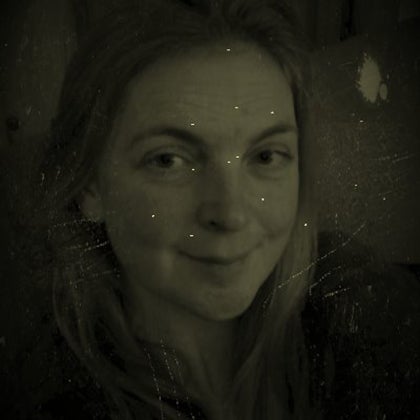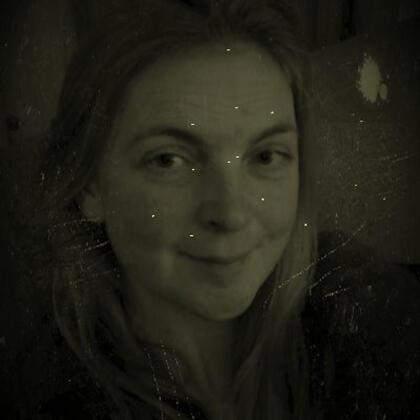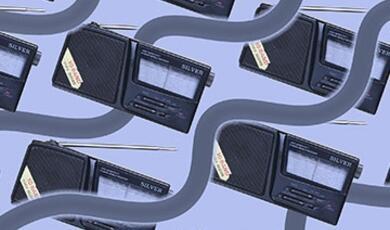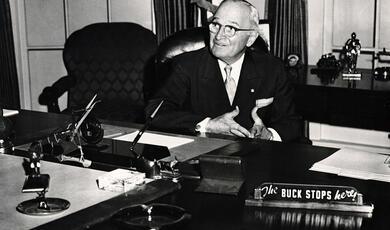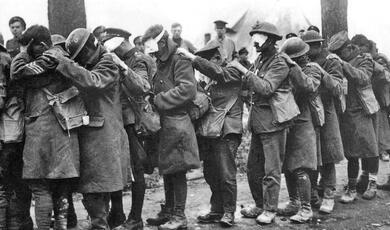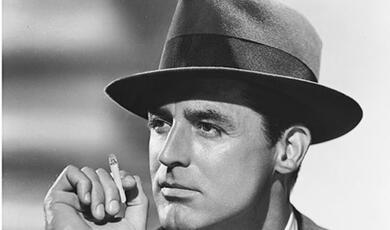London at War
Share
- Details
- Transcript
- Audio
- Downloads
- Extra Reading
Part of the Visual Impressions of London lecture series at 1pm on Mondays.
Ulrike Smalley, Curator of the Department of Art, The Imperial War Museum.
Download Transcript
VISUAL IMPRESSIONS OF LONDON - LONDON AT WAR
Ulrike Smalley
In this talk about 'London at War' I will concentrate more specifically on London during the Second World War. My talk will focus on the way London was changed through the Second World War, the aerial warfare especially, the way this was depicted in art and collected, under the official war artists' scheme, and how these images were then interpreted at the time and seen by the public. I hope throughout the talk you will see interesting images, but also hear some interesting contemporary voices talking about the role of war art.
Before I talk about the Second World War, however, I have brought along a couple of images from the First World War, because the First World War is a predecessor in the way that an official war artists' programme was formed, in a quite ad hoc way, in the year 1916. The programme enabled the collection a huge amount of material, not only of the War on the Western Front and Gallipoli, but also of the Home Front. We encounter the first image of London at war and of aerial bombardment, namely a Zeppelin raid in Norman Arnold's picture. St Paul's Cathedral was used as a leitmotif throughout the Second World War of London, and it is seen in this picture.
What did the Londoners do? Well, in the First World War they took refuge in the tube [underground railway system], something we know also from the Second World War, but in the First World War this was the only shelter available. Walter Base produced a huge painting, it is truly of magnificent dimensions. Those of you know Singer Sargent's 'Gassed', this is the same size when you see it in reality. It depicts a scene of Londoners, from all classes of society, all of a sudden thrown together in a public space, a public space that has to become their second home. There was really intimate and quite private things going on, like a lady wiping her baby's bottom next to somebody who is looking on slightly disapprovingly, with half-dressed girls asleep in the foreground. I think this gives us an inkling of what is to come during the Second World War.
Anybody looking at the Second World War and its artistic record has to talk about the War Artists' Advisory Committee. It was founded in 1939 by Kenneth Clark, who was then Director of the National Gallery. He managed to get public funding. He annexed the War Artists' Advisory Committee to the Ministry of Information. They had a proper budget, and thus they were able to employ artists on a salaried basis. They commissioned artwork from particular artists, and they also bought material sent in by people on spec. They advertised in newspapers saying, 'Send us your artwork - if we like it, we will buy it from you.' They amassed an enormous amount of material, over 6,000 works, mainly drawings and oils, from over more of 400 artists, amateurs, some professionals, some civilian, some soldiers in the forces. They covered all the different theatres of war - the Home Front, and the different military branches. It is an amazing pictorial record of Britain's war effort during the Second World War, and a lot of this material is now being digitised. It was a pleasure for me to go through the slightly lesser known part of the collection for some of the images of London during the Second World War.
The material, at the time, was widely exhibited. It was Kenneth Clark's idea that art should be brought to the people, so exhibitions were arranged not only in London, but throughout the UK, and they were sent overseas to neutral countries, obviously to sway opinion there to join in the British war effort. Some material was actually lost on ships which were torpedoed and sank. A whole exhibition on the way to South America was lost that way, which is rather a pity.
In addition to these exhibitions, they also had a number of publications showing war pictures by British artists, of which there were a number of series. I am going to look at some of the quotes from these publications, because I think it is very interesting to see what sort of idea people had, why was war art important, and what role it was to play.
'Those who hold that to tell the truth is the most effective form of propaganda will find their demands satisfied by the pictures reproduced in this book.' You can see one important fact is that the artwork collected by the WAAC was supposed to be eyewitness accounts; they wanted artists to paint what they had seen themselves, not necessarily always in the spot, as that would not have been feasible, but not second hand accounts if possible.
In this war, by war pictures we mean pre-eminently paintings of the Blitz. The background of this war, corresponding to the Western Front in the last war, is the bombed city, and this stresses the role of the Home Front. It is not astonishing that London was one of the most painted cities during that war.
There is a place for the descriptive artists. 'There are aspects of descriptive recording which in fact are beyond the camera's power, and there is a place also for the subjective artist because it is only in the totalitarian slave states that individual impressions and comments are feared and made taboo.' I think this addresses one of the main questions one would have, which is, why art? Why not rely on photography for this record of the war? Because they are expecting something more than just historical records. They are expecting records of the emotions felt by people and they want this individual expression, which then reflects back to the people who were there at the time, how they are feeling. It is interesting, where you are basically shown by the artist this is what you are seeing and this is probably what you are feeling about it as well, so they are making sense out of all the chaos and destruction.
'The business of the War Artists' Advisory Committee is to set painters, draughtsmen and sculptors to make records of the war. Records may be of facts, but they may also be of ideas and emotions. The records of facts, events, emotions, ideas which these artists are making for the Government now are a small token to set for all time against the hideous waste of war, and though they cannot be fully worthy of their vast and awful subject, they may, like faded relics in a forgotten drawer, one day faintly stir the curiosity, the pity, and perhaps the envy of generations more free and careless than ours, by giving them some hint of what was done and felt and seen by their forbearers, young and old, in these hard, proud times.' So this artistic record had a lofty ideal: it was not only for the contemporaries to see what is happening around them, but also a record for future generations. In a way, it brings something positive out of the hideous destruction of warfare itself.
With the start of the Second World War, the first thing that happened was obviously the blackout. The lights went out in London and they did not come up again until the end of the war in 1945. Astonishingly enough, there are not that many paintings of the blackout! For somebody who is dealing with light as their subject, the absence of light is incredibly hard to depict, and although Ruskin Spear produced a famous painting of the blackout, I do not think it is altogether very successful.
The first month of the war, except for the blackout, was still quite quiet. It was the time of the 'phoney war', when not much was happening. Kenneth Rowntree, who was a conscientious objector - he was a Quaker - depicted the foreign servicemen in Hyde Park in quite a carefree, impressionistic way, reminiscent of Paris. Although these first months were fairly quiet, at the end of August 1940 the London Blitz started.
The Blitz comprised 130 nights of raids, especially seamless in September 1940. Attacks continued into 1941, and 20,000 Londoners died between September of 1940 and May of 1941. Until the autumn of 1942, more British civilians than soldiers were killed, so it is not astonishing that London accounted for 55% of the UK's deaths. The War Artists' Advisory Committee acknowledged this and was very keen on recording the physical and emotional impact of air raids on the civilian population. So the majority of the images we have of London in wartime deal with the subject of air raids.
I imagine you will not be astonished that not many paintings actually show air raids as they are in progress. It has a purely practical reason: it was terribly dangerous to be out there, and unless you were a fireman artist or a civil defence artist, like Leonard Rosoman, you would not necessarily be an eyewitness of events. One artist who tried to be an eyewitness, Felix Topolski was actually injured so badly that he had to stay in hospital for five weeks. So we only have a handful of images of on-going raids, the fire fighting, the defence of the City, and I think the most famous one of these is Leonard Rosoman's 'A House Collapsing on Two Firemen'.
It is quite curious, when this was used in a programme on the Blitz on television, we had numerous 'phone calls from people ringing up and asking, 'Do you have the falling wall in your collection and is it on display?' This is what stuck in people's minds, amazingly. I have to say, Leonard Rosoman actually did not particularly like this painting. He thought it was too emotional, too raw, and he steered away from it later on, but it depicts an event to which he was an eyewitness. He nearly was one of those people being crushed by the burning wall falling down. One of the people depicted had just come in and taken over from him because he himself had to go back to report to headquarters, so he escaped death by a whisker's width.
What seized the artists' imagination and what was much more easy to paint, but epitomises London at war, are the tube shelterers. The most famous image of the shelter drawings was by Henry Moore.
I have to say at the beginning that the Government was actually not that keen on people sheltering in the tubes. They knew it would happen because it had happened in the First World War. They could not keep people out of it, but they were very afraid that it would lead to a 'deep shelter complex', of people not wanting to come out again, and also disruption to public transport because the tube was, after all, still running and it was vital for the war effort. However, as they could not discourage people, it was secretly condoned and people were allowed down there. About 100,000 people sheltered every night during the Blitz down in the tubes.
Henry Moore's drawings are the most famous ones of this phenomenon, but Henry Moore at this point was not actually an official war artist. He encountered this just by chance. He recounts:
'One evening we arranged to meet some friends in a restaurant and, for some reason or other, went into town on the 24 bus instead of going by car. We returned home by underground, taking the Northern Line train to Belsize Park Station. It was a long time since I had been down in the tube. I had noticed the long queues forming outside underground stations at about seven o'clock every evening, but had not thought much about it, and now, for the first time, I saw people lying on the platforms at the stations we passed. I was fascinated by the sight of the people camping out deep under the ground. I had never seen so many rows of reclining figures, and even the holes out of which the trains were coming seemed to me to be like the holes in my sculptures. There were intimate little touches: children fast asleep, with trains roaring past only a couple of yards away; people who were obviously strangers to one another forming tight little intimate groups. They were cut off from what was happening up above, but they were aware of it. There was a tension in the air. They were a bit like the chorus in a Greek drama telling us about the violence we do not actually witness.'
I have selected two images from the shelter drawings. One is actually in the Imperial War Museum, and it is said to be, by Henry Moore's account himself, one of the earliest drawings he did. You can still see the little groups of mothers and children sitting, quite realistically drawn, and from then, he moves on, in 1941, with the grey shelter perspective, into a much more abstract way of depicting the situation. When this was seen by the War Artists' Advisory Committee, they really loved his work so much they even commissioned him, they bought drawings from him, scaled up from his sketches, and exhibited them, and somehow it was perceived that Henry Moore was actually working as an official war artist. In retrospect, people assumed that.
What was capturing the imagination of people at the time was the universality of these situations. These were a powerful depiction of the experience of survival, universal and unifying, representing the shared experience of a vast number of people, so they had an immense influence on the imagination and obviously also on Moore's career.
But Henry Moore was not the only artist who was interested in the shelter drawings and, as I said, he was not an official war artist. The Advisory Committee had sent out their own people. I love the way Edmond Kapp tries also to evoke this universal experience - the crowds sheltering at any tube station, but then showing a very particular theme, very realistically drawn, and the vulnerability, the slight indignity of these people who have to sleep in this communal space, being observed by passers-by. It has its own intimacy which is very, very endearing.
Felix Topolski's 'The Warehouse Shelter in Commercial Road' shows one of the other big communal shelters, which is even more unofficial than the tube. Apparently, the Tilbury warehouse in Stepney was invaded by Eastenders who needed to seek refuge somewhere and they kicked the doors in, despite fire wardens trying to keep them out. The shelter housed about 3,000 people usually, but could take as many as 13,000 and, because it was not officially prepared, it was quite a dismal place and a lot of the eyewitnesses' accounts give you an idea of this.
'The first impression was of dim, cavernous immensity. The roof is made of metal girders, held up by rows of arches, old and solid, giving a somewhat church-like atmosphere. The floor was awash with urine - only two lavatories for 5,000 women, none for men - we were overcome by the smell.'
This is not quite carried across by Topolski's drawing, but what I think Topolski expresses beautifully is the irreverence of the Londoners who have found refuge. These were the poorest of the poor of the East End who took refuge, a lot of the immigrant population, and it reminds me forcefully of Gilray's and Rawlinson's 18th Century caricatures of London Underground, of people dancing in the face of abject poverty and danger. It is a wonderful, refreshing painting, of a slightly more irreverent look at London.
The other official war artist sent out to record the East End and the shelters in the tubes was Edward Ardizzone. You might have encountered him from his illustrative works, especially for children's books. His style is instantly recognisable. It is quite humorous, only slightly deprecating. It always understates the seriousness of the situation, and often understates the courage shown by the protagonists. There is a whole series of drawings in our collection by Ardizzone of people in the East End, especially Silvertown, showing the queues forming outside the tube station for seven o'clock - that is when people would be let in - showing people running through bombed-out streets, past the bombed-out pub they usually would drink in, but also with quite humorous little huddles of Home Guards and workers.
While all these people were sheltering in the Underground, work was going on. The trains were running. Athere is a wonderful lyrical scene by Ruskin Spear, whose painting I think of the blackout did not quite succeed, but this one is a beautiful work, showing workers returning from their nightshift, tired, slightly dejected, but again with a lack of personal space in this situation which is quite touching.
The tube was not only used for transport; there was a whole factory down there. Plessey, a manufacturing company with vital expertise in radio and aircraft equipment, took over a two mile section of newly-constructed tunnels of the London Underground in order to maintain production. Frank Dobson was asked to do two paintings of this, and one he chose to do was of the workforce descending down into the underworld, in orderly rows. It could be an operatic production.
Once people came back upstairs, what did they encounter? We have a few images, as I said, of the fire-fighting, and then we come into the vast range of images showing London after the bombardments. There is Anthony Gross' 'A Gas Main on Fire in Chelsea'. There is no sense of panic. Indeed, there are hardly any images showing Londoners in any sort of disarray or any sort of panic. This is nothing to do with the fact that there might not have been any panic; there was, we know now. There were all sorts of riots and mass panics, but we are dealing with official records, and although at the beginning it states that what these paintings are telling us is the truth, the truth has many faces, and very often what is omitted is as true as what is included.
I should, at this point, say a little bit about censorship, or what we know about censorship of these works. Everything had to go past the military censor. Even Henry Moore's shelter drawings would have to be passed by a military censor, who checked whether there was information in it that would have been of interest to the Germans, so obviously anything of that sort would have been censored. But, more than that, the War Artists' Advisory Committee obviously felt that certain things were not probably quite appropriate. There are a couple of letters we have in our collection, correspondence between artists and the Committee, which give us little insights into this. One lady's drawing of people sheltering in a communal shelter was commented on because the people looked a bit worried, and the War Artists' Advisory Committee did not like that!
Carl Wade, another artist, had drawn a scene of which he had been an eyewitness - he was amongst people in a trolley bus which was attacked by a swooping Messerschmitt, and everybody scuttled, everybody was in a panic. He was told that may be that was not the most appropriate subject for a picture, and why wouldn't he want to do a lovely vignette of a zebra, panicked, escaping from London Zoo instead?!
There is a sort of censorship going on, a discouraging of subjects which would have been bad for morale and would have reflected the natural anxieties going on, because people really were very worried about the situation. So Edward Ardizzone's 'Bombed Out' is slightly humorous; well, it is not even humorous, but I think his people are amusingly resigned, and just coping with the situation. There is no sense of real grief or panic about them.
The obvious effect of the air raids was a development of the city which became a bombscape. It is very interesting to look at the images the Committee collected, because the vast majority of these drawings and paintings deal with a ruined city. But what do they deal with? Do they show us the East End, the housing estates which were the main target area? Do they show us the industrial site in the Docklands, the dead and the wounded? No. That is really missing from the scene. What the artists are focusing on is the cultural heritage: the historic buildings of London, the churches especially and, as I mentioned, the leitmotif being St Paul's, still defiant, still intact, standing in this sea of rubble.
We had Bone, who was a veteran artist. He had already been the first official war artist in the First World War, and was called back to London - he was up in Scotland at the time - to record the effects of a big fire blitz which happened on 29th December. He was a superb draughtsman. One of his paintings was a very popular image at the time, and shows the view of St Bride's, now a ruin, over to St Paul's, a landmark in this sea of destruction.
I have, for the occasion, found one painting which has some sort of connection to Gresham, be it Gresham Street! It again shows us St Paul's, and the destruction has been somewhat alleviated, things are being put back to order again, and one can see the dome of St Paul's Cathedral, beautiful in a sea of ruins. It is quite interesting that Kenneth Clark and a lot of the artists picked up on that. We have a letter by Clark to another artist kind of saying: 'I know you have painted St Paul's a great many times, but I hope you will not mind painting it once more, because I do not think it has ever looked more beautiful than it does rising out of this Pompeii in the foreground. The Pompeii is all the elements of colour which I think you enjoy painting.' I think you can see this kind of focus on St Paul's as a symbol of civilisation, of the British civilisation, and the focus of the destruction of national heritage, becomes it is something the artists themselves seem to have seized upon. We have records of artists saying how they met other artists scouting amongst the ruins for appropriate scenes, so it was something of a field day for them.
I have found some very interesting images of this context of London as Pompeii. if you see them without their titles, I think you could be excused of thinking that they are 18th Century drawings of antiquity somewhere in Italy. Nobody would recognise London necessarily much. The idea was one of London is being a city with a long history, beautiful in its resignation and calling everybody to be part of this history and stand behind it. I think this is the nicer side of propaganda.
There is a complete absence of dead bodies in all this. 20,000 Londoners died and we never see them. I think the closest I have got to any dead is one of the titles of the drawings where it said 'Looking for the Dead' but you do not actually see them. I came across a wonderful image of the effigies of the crusaders round Temple Church, and the blue tarpaulin reminds one very forcefully of a body bag; it is the architecture, it is the heritage that is being put to rest here. Whether the artists were actually actively discouraged from drawing the dead and the wounded or whether it was some sort of self-censorship, some feeling that it was not appropriate, that this is not something you wanted to paint, can be debated, and I do not think anybody has found any precise answers to that yet.
What we do have though is an equation of destroyed architecture, of buildings and inanimate matter, to reflect the suffering of the population, and that became most clear in Graham Sutherland's works, mostly executed in the city, an area that was not as densely populated as the Docklands or the East End. He recounts:
'I will never forget those extraordinary first encounters, the silence, the absolute dead silence, except, every now and again, a thin tinkle of falling glass. I remember a factory for making women's coats. All the floors had gone, but the staircase remained, as very often happened, and there were machines, their entrails hanging through the floors but looking extraordinarily beautiful at the same time.'
The bent girders, the remains of the building, the visceral sense of this being the entrails, a body that is being tortured and dismembered - this equation to the suffering population was very clear, and was picked up by critics at the time. Stephen Spender remarks:
'The twisted girders and broken entrails of a house in a picture by Graham Sutherland really reveal something to us of the nature of destruction.'
So it was not necessary actually to paint the dead and wounded; you could convey it in a different form through these paintings.
Howard Lodge was another war artist. You can be excused again for not knowing about him - I did not know about him. He submitted two paintings to the War Artists' Advisory Committee. They were bought for 25 guineas in total, one of them 'London Carries On' and another entitled 'Business As Usual'. They are similar myth-making scene of the stolidity, the courage and the resilience, the unflappability of the Londoners in the face of the destruction. They are slightly at odds with the reality, because the Government was very, very much concerned, especially with the East End population who were taking the brunt of the bombardments, that the people would not take it any longer. So I am not surprised that the Committee went for these two paintings.
Another side of London during the War was the social side, the effect warfare had on society in general, families being rendered: some, the men, going off to war, women into the factories, which meant the children had to stay somewhere. Ethel Gabain was one of the few print-makers who was asked by the War Artists' Advisory to produce material. One shows boys from South East London gathering sticks and cooking wood; it is about evacuation. Another depicts a typical war workers' crèche where children would be looked after during the period. She sees the situation through somewhat rose-tinted glasses. It is all very clean and everybody is frightfully happy about being out there in nature and learning all sorts of things. When you read any account of mass observation of the time, you find out that this has nothing to do with the reality. Juvenile delinquency in London was at an all-time high during the War, and crime rates were up; there were all sorts of social disturbances going on, and nobody really captured this in any of the paintings.
The only thing I could find that is anywhere close to this darker and seedier side of London was the work of John Minton. I think he would be terribly upset if we would call him a social commentator, because he was not about that. He was a Romantic painter, a neo-Romantic, and all his paintings always include the self-portrait. But the background, the dark, ruined streets, with roaming youths which he includes in his painting, gives us a little bit of a feel of this darker side of the social unrest that was also afoot in London at war.
To summarise, there is a vast amount of material that was collected showing London at wartime. It focuses on two fields: it focuses on the shelter drawings, the communal shelters; and it focuses on the destruction of cultural heritage, which is a slight shift from the historic reality, because more housing and industrial sites were destroyed than actual cultural heritage. The communal shelters were also not that typical for a Londoner's experience, because only four percent of the population ever sheltered in the tubes. The rest stayed at home in their Anderson shelters in the back gardens or in their houses under the stairs, and later on in Morrison shelters, which were a type of metal table under which you could shelter. None of that is recorded. We have not got any images of that, or even of the people who just left London during the night. In total, these images were interpreted in a way that worked towards myth-building, this idea of the spirit of the Blitz, that this is our heritage we are defending, this is London pulling together. These communal shelters convey the idea of a cohesive community, which it was not, because it was in general the lower classes who had to seek refuge there because they did not find anywhere else to go. What is left out is the other, darker side of things, even the crime rates and juvenile delinquency.
I hope that some of these images have made you curious. We have very little on display at the moment at the Imperial War Museum, but there are a couple of publications, some of them very recent ones, which really look into the War Artists' Advisory Committee's collection. They look at how things were depicted and what was collected and will give you a good starting point if you want to do further reading.
©Ulrike Smalley, Gresham College, 22 October 2007
This event was on Mon, 22 Oct 2007
Support Gresham
Gresham College has offered an outstanding education to the public free of charge for over 400 years. Today, Gresham plays an important role in fostering a love of learning and a greater understanding of ourselves and the world around us. Your donation will help to widen our reach and to broaden our audience, allowing more people to benefit from a high-quality education from some of the brightest minds.


 Login
Login
